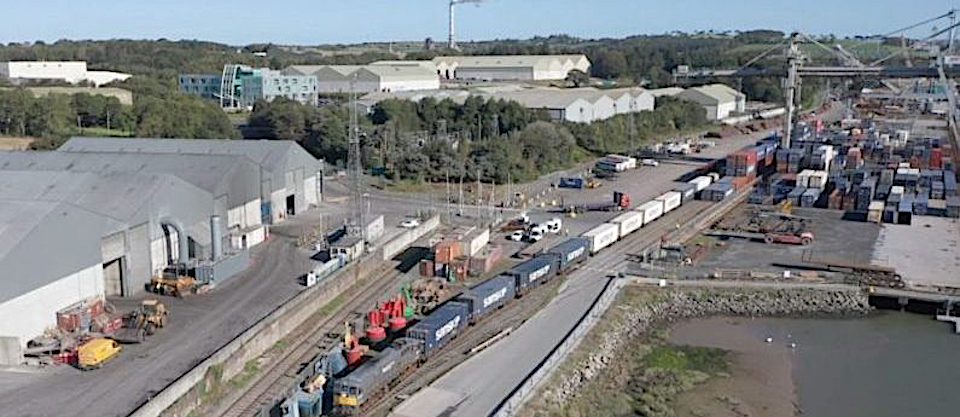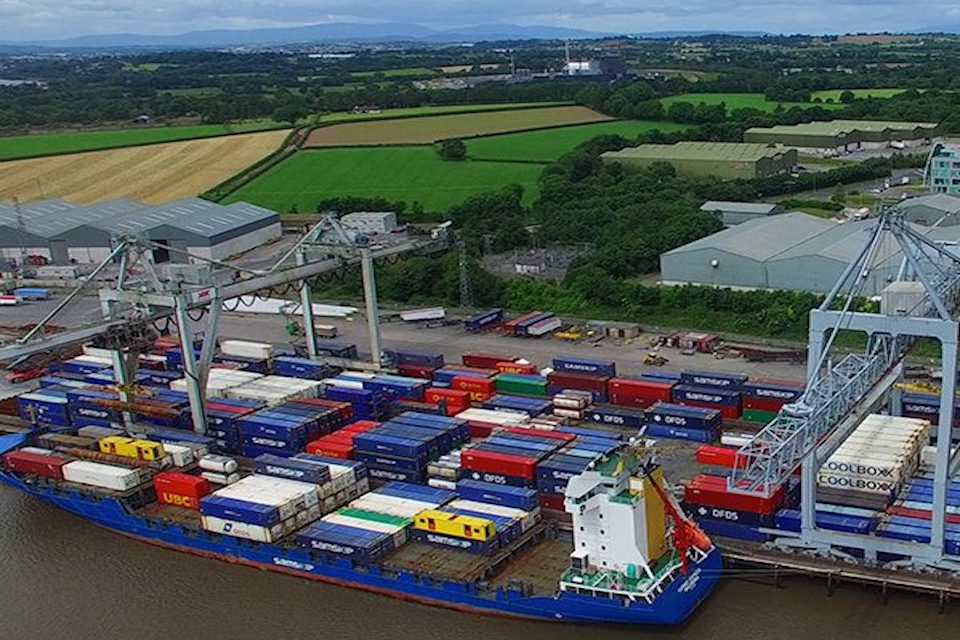Irish Rail freight ambitions may call for greater celebrations at Waterford

At Waterford in the Republic of Ireland, the scale of rail freight operations may not be quite as intense as Rotterdam or Felixstowe. However, within the context of Irish rail freight operations, Waterford represents a significant terminal, behind only Dublin / Dun Laoghaire. From the metric of national trade, the port’s rail infrastructure is possibly the most intensely used on the whole island of Ireland.
Irish Rail (Iarnród Éireann) has been celebrating the importance of Belview, the rail freight terminal at the port of Waterford in the south of the island. While handling two trains at once may seem like something of a quiet day at many terminals on the other side of the Irish Sea, it is nevertheless a pointer towards busier times at the port and a move in the right direction for Irish Rail’s strategy for the next two decades. That somewhat modest boast is nothing less than a portent of things to come.
Post-Brexit boom is a legacy for Waterford
Belview, the dedicated rail terminal for the Port of Waterford, stands as a linchpin in Ireland’s rail freight strategy, aligning with the broader vision outlined in their Rail Freight 2040 Strategy. That document outlines the expectation that rail freight will grow considerably in Ireland and possibly even see a reintroduction of services in Northern Ireland. However, Waterford’s rail freight terminal is already playing a strategic role in Irish-European trade. Traffic has been boosted since the implementation of Brexit when the UK voted to leave the EU.

That democratic decoupling has proved a bonus for south coast ports in Ireland. There has been a measured increase in traffic, redirecting away from the UK “landbridge”. The most obvious benefit has been an increase in intermodal cargo, which has been most readily redirected away from the added administrative complications of crossing England and Wales to reach Dublin. “With the capacity to handle additional freight, there is the opportunity to build on the recent success of new intermodal services”, says Irish Rail in their 2040 strategy.
Plenty of scope for growth
The redirection of imported traffic to the Port of Waterford, facilitated by its rail terminal, underscores the success of this strategic approach. Outgoing, Ireland’s traditional exports of agricultural produce and raw materials (timber and minerals) all depart through the port as well. Belview’s efficiency in handling diverse cargo types, combined with its direct rail links, has given the port operators at Waterford every reason to boast their growing significance. Rail freight may still play a minority in the Irish transport network, but it is growing in the economic landscape at large. “Intermodal services [and] connections with large manufacturing facilities in the vicinity of the port has the potential to increase rail freight volumes further”, says Irish Rail’s strategic report.

The domestic Irish market may never be big enough to warrant the scale of rail freight operations in other, more populated parts of Europe. Compare Waterford’s ambitions with, for example, the plans for Dunkirk in France, also announced recently. However, with rail currently taking a significantly lower proportion of freight traffic in Ireland than in comparable regions in Europe, there is plenty of scope for growth – perhaps even future traffic between this Irish port and that French one. Celebrating two trains handled simultaneously at Waterford may seem inconsequential outside Ireland. However, if ambitions are met, then such celebrations may be met with similar indifference in Ireland in the future, too.






Future proof, with safety factors, with robustness, as at other modes and at clients…, when railway proves “equal”, then for sure market shares will be added.
However, a pity it is, TEN-T, as currently defensively by Commission, devastatingly cements, at no longer optimal standards – and obstructs Goal of Union…
(Shift can be complete within a 10 year period, to a STAX32 track, etc. thus safely adding capacity within current tracks, with more than 40%. Costs will be reduced, etc., etc.)